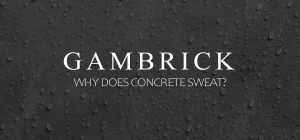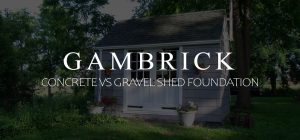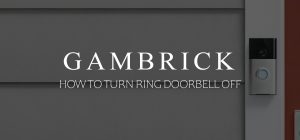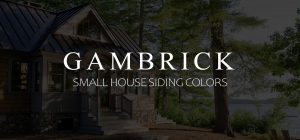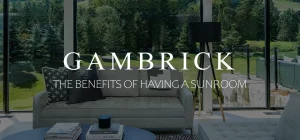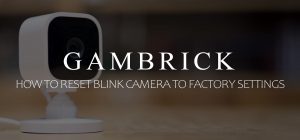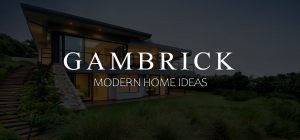Which Way Should A Fence Face?
If you’re installing a new fence with two sides, you’ll have to decide which way the fence should face. Many fences have a finished side and an unfinished side where you see the horizontal bars. This side is generally considered less attractive. It’s a tough question to answer because both sides of the fence are seen. So which way should a fence face? If you’re concerned about curb appeal or have neighbors who’ll share the fence, it’s better to face the more attractive side out. This also helps with security because the cross bars can be climbed like a ladder. And it makes maintenance easier because the brackets and screws holding the fence together will be in your own yard.
Clients always ask “Which side of the fence do the posts go on?”or “What side of my fence should face the neighbor?”. The rule of thumb answer is that the finished, or more attractive side of the fence faces the outside of your property, while the rougher side faces in. This keeps the fence posts, rails, and connecting hardware on the inside of the fence where you can access them.
Luckily there are fence designs that have two finished sides, so both you and the neighbor have an attractive fence to look at. They generally cost and weigh more because of their design but look the same on both sides.
According to most city and HOA rules, the face, or finished side, of a fence should face out. Check with your building department when installing a fence because the decision may not be up to you.
Property Lines
Whenever you build a fence, it’s important to know where your property lines are. I recommend hiring a land surveyor to stake out the borders. If you go by your houses paper survey and build the fence on land that’s not yours, the neighbor could make you take the fence down.
Most fence companies have their own surveyor and will offer the service as a part of the installation cost. It’s a good idea to have them do it because if there’s a mistake, the fence company will have to cover the repairs. However, if you tell the fence company where to install the fence and there’s a mistake, you have to pay to fix it.
Building Codes & The HOA
Always contacts your local building department when installing a fence. They’ll tell you all the rules and regulations for where you live. As with most things construction related, decisions aren’t always up to you.
Also talk to your HOA if you’ve got one. They often have their own rules for a fence that aren’t covered by the building department. In many cases, which way the fence has to face is covered by an HOA and not a building regulation.
Building Codes
You should be aware of your local codes and regulations before building a fence. They may have something to say about which direction the fence needs to face. But generally building codes have more to do with setbacks and height restrictions.
In order to build a fence around your property, most towns and cities have rules and require a permit.
Depending on where your house is located you my have to follow some general guidelines. Here’s a few of the more common ones.
- The fence usually has to be a particular distance from the street.
- It should not obstruct sight from roads and corners.
- There are usually height restrictions based on where the fence is. For example, 6 foot for the back yard and 4 foot for the front are common rules.
- Gates are sometimes required.
Pools are also a big concern. They sometimes effect where and what type of fence you can have. The type of pool matters too. Often times a below ground pool is treated differently than an above ground.
Before you can install the fence, you may need a permit. There’s typically a fee involved and some paperwork which may include a review of of the fences location and it’s design. This may also include which way the nice side of your fence will face.
HOA Rules
An HOA, or Home Owners Association, typically has their own rules governing fences. These rules generally have more to do with appearance than the construction of the fence.
Keep in mind that an HOA rule does not make it OK to break a building code. No matter what the HOA says,you still have to follow building code. That’s why they’re usually just about cosmetics.
HOA rules are usually about height, location and design. For example, an HOA may say all fences have to be white. Or all front yard fences must be 3 foot or under. Most HOA rules are there to set some standard appearance guidelines for the community.
Most times, HOA rules will dictate which direction a fence should face because it’s more of an appearance issue than a construction one. The fence will function the same no matter what direction it faces. But it won’t look the same. As a general rule of thumb, HOAs require the nicer side on a fence to face out.
Because each neighborhood’s style is different, you should always check with them when designing your fence. In most cases you have to get both an HOA approval and a town permit. I recommend getting the HOA approval first.
Neighbors
If your fence is built entirely on your property line, and within HOA and township guidelines, you probably don’t have to speak with your neighbor prior to construction. But I always recommend that clients do. It may not be required but its a courtesy, and in many cases the neighbor ends up paying for some of the fence. If the fence is a property divider and they want a fence too, it may be something you can agree on. You’d be surprised how many times neighbors split the cost of a fence that borders their property too.
In this case, if you and your neighbor share some of the cost, which way should the fence face? The general rule still applies, the nicer finished side should face outward from the property the fence is actually built on.
The “face” is the nice-looking finished side of the fence. The “rear” of the fence is the less appealing unfinished side that shows the horizontal bars and brackets.
The Finished Side Of The Fence Faces Out
Some fences have a finished side or a “good” side that’s called the face of the fence. It’s typically smoother and doesn’t show rails, brackets or posts. Solid panel privacy fences are usually built like this. As a general rule, the finished side should face outward toward your neighbor.
This is generally considered the standard way to install a fence. If you don’t do it, your fence will look like it was installed backward.
In some cases, it’s not up to you which way your fence faces. Check with your HOA or local building department. But if it is, build your fence with the nicer side facing out and the rails facing in.
If you don’t like the look of rails, posts and brackets, build a fence with both sided finished. These are sometimes called “good neighbor fences”. Basically it’s a privacy fence where both sides get the same panels or pickets.
Because double-sided fences have two finished sides instead of just one, they’re heavier and more expensive.
Benefits Of Facing The Good Side Of The Fence Outwards
Even if your local building code or HOA doesn’t require your fence to be built with the finished side facing out, there are some benefits.
- Curb appeal is a big benefit. If you face the rails, posts and brackets outward the house will look funny from the street. It’ll look like the fence was built incorrectly.
- The finished side of the fence is harder to climb which increases security. The horizontal rails holding up a picket fence are like a ladder.
- The finished side of the fence is the strongest side which makes it better at repelling impacts. If force is exerted from the outside, whatever is pushing against the fence panels also pushes the rails and posts.
- Nuts, screws, brackets and bolts also installed on the non-finished side. If you installed the fasteners on the outside, anyone could take the fence apart and walk right into your yard.
- Maintenance is easier when the rough side of the fence faces in because it’s easy to remove a panel for repair or replacement. All the work can be done from your own property.
If you want the fence to look better from inside your own yard don’t turn it around. The better solution is building a double sided fence. Install pickets or panels against the rails and posts on your side of the fence to make it look nicer. This also adds increased strength to the fence.
General Fence Etiquette
If you’ve got neighbors, there are some general fence rules you may want to consider.
- Discuss the fence with your neighbor’s prior to building it. This is especially helpful if they don’t have a fence because the backside of your new fence also faces into their yard.
- The nicer side of the fence faces outward toward the neighbor.
- Most areas will have guidelines that dictate fence height. But if not, backyard fences are generally 6-8 feet high. Front yard fences are typically smaller at 3-5 feet high.
- Check with the local building department and your HOA before building a fence.
- Get your property staked out prior to building the fence. if you build on a neighbors property they can force you to take down the fence.
If you want the nicer side of the fence facing inward toward your own house, there are ways to do it without effecting the neighbor. Choose a fence design that looks good from both sides or build a double sided fence. Here are a few designs that should work.
- Shadow Box Fence
- Vinyl Fence
- Aluminum Fence
- Chain-link Fence
Shadow Box Fence
Shadow box fences look like a typical wood picket fence, the front faces out and the back faces in, but they have pickets on both sides. This means the fence looks the basically the same from either direction. If you install a shadow box fence you won’t have to decide which way to face the fence because both sides look the same.
Shadow box fences have alternating pickets on either side of the rails and posts. This creates the illusion that the fence is solid but looks good on both sides. The standard solid privacy fence installs pickets right next to each other on only one side of the fence. This looks better on the outside but worse on the inside. The downside to this is that there are gaps you can see through from some angles.
Shadow box fences are stronger than the standard privacy fence because they’ve got pickets on both sides which means more impact resistance. But they’re a little easier to climb that a solid fence if you can squeeze your foot in between the pickets and onto a rail.
Vinyl Fencing
Vinyl fences generally have the same finished side on both sides, so they look great no matter what angle you look at them from. They’re not built like a typical fence with rails and pickets because the panels come in one piece. Typically all you do is bolt them to side posts with brackets. The side of the bracket with screws faces in for security.
Solid vinyl fences are great for privacy and security because there’s no room between the boards. They’re totally solid and smooth which makes them hard to climb.
Picket style vinyl fences look great from both sides but don’t offer the same privacy or security benefits as a solid fence.
Aluminum Fences
An aluminum fence is another great way to avoid deciding on a fence direction. They’re typically black pickets and posts with a matching black top and bottom rail. Both sides look the same so it doesn’t matter which direction the fence faces.
Aluminum fences are not solid. If you want privacy this is not the fence for you. They’re also easy to climb so aluminum isn’t great as a security fence. But if you want a great looking fence that can keep animals out, or your kids in, then this is a good option.
Chain Link
Chain link fences are basically the same on both sides so you won’t have to choose a fence direction. Although the bolts and brackets always face inward for security.
Fence fabric can be used along with a chain link fence to add privacy. In this case, the fabric is usually installed on the inside of the fence. In this case, a chain link fence has the nicer looking side facing in, not out.
Summary: Which Way Should A Fence Face?
The best way to set a fence post without digging is with a post anchor and sledge hammer. There are a few different anchor designs which we’ll discuss throughout the article, but the basic concept is the same. Pound the anchor deep into the ground and then bolt a fence post to the top of the anchor sticking out of the ground. The great thing about using post anchors is not having to dig or work with concrete. But it’s still hard work. Pounding a fence anchor deep into the ground isn’t easy, especially if you have hard or rocky soil.
Post anchors aren’t as strong as burying the post or setting it in concrete. But it’s still strong enough to support low fences. When you use an anchor, the post is attached to the anchor after it’s set in the ground. This connection is now the most common point of failure for your fence so use really strong bolts or the entire fence will be weak.
It’s hard to install a post anchor level and plumb because you can’t adjust it as you go. Make sure you drive the anchor carefully. Ultimately, the fence post will follow the same general direction as the anchor. If the anchor isn’t perfect, the fence post won’t be either.
That’s basically it. Setting a fence post without digging is easy.
- Dig a test hole to check the soil conditions.
- Drive the anchor with a sledge hammer.
- Bolt the fence post to the anchor.
- Build your fence.
If you have any questions or comments about which way a fence should face, Email any time.

